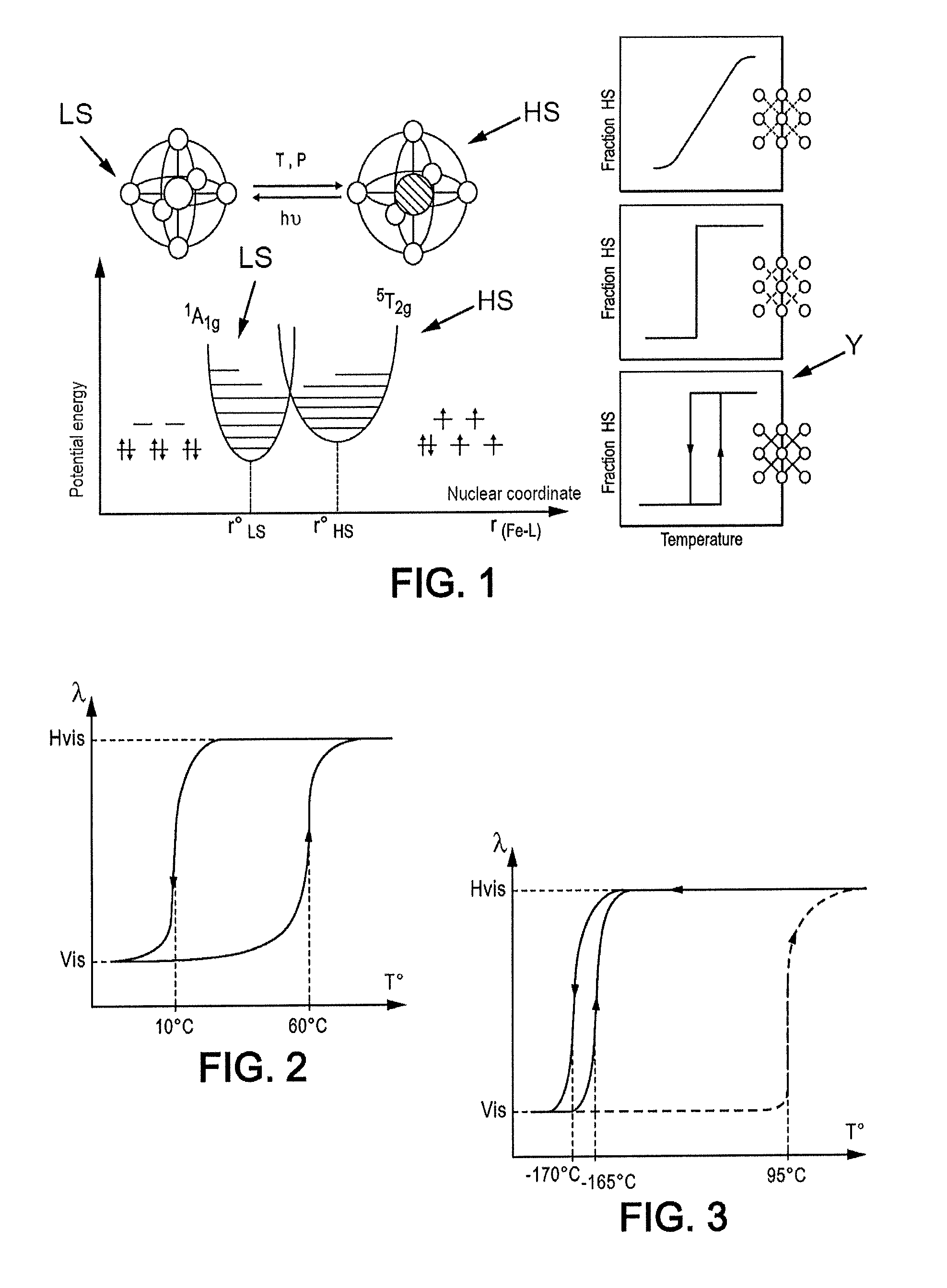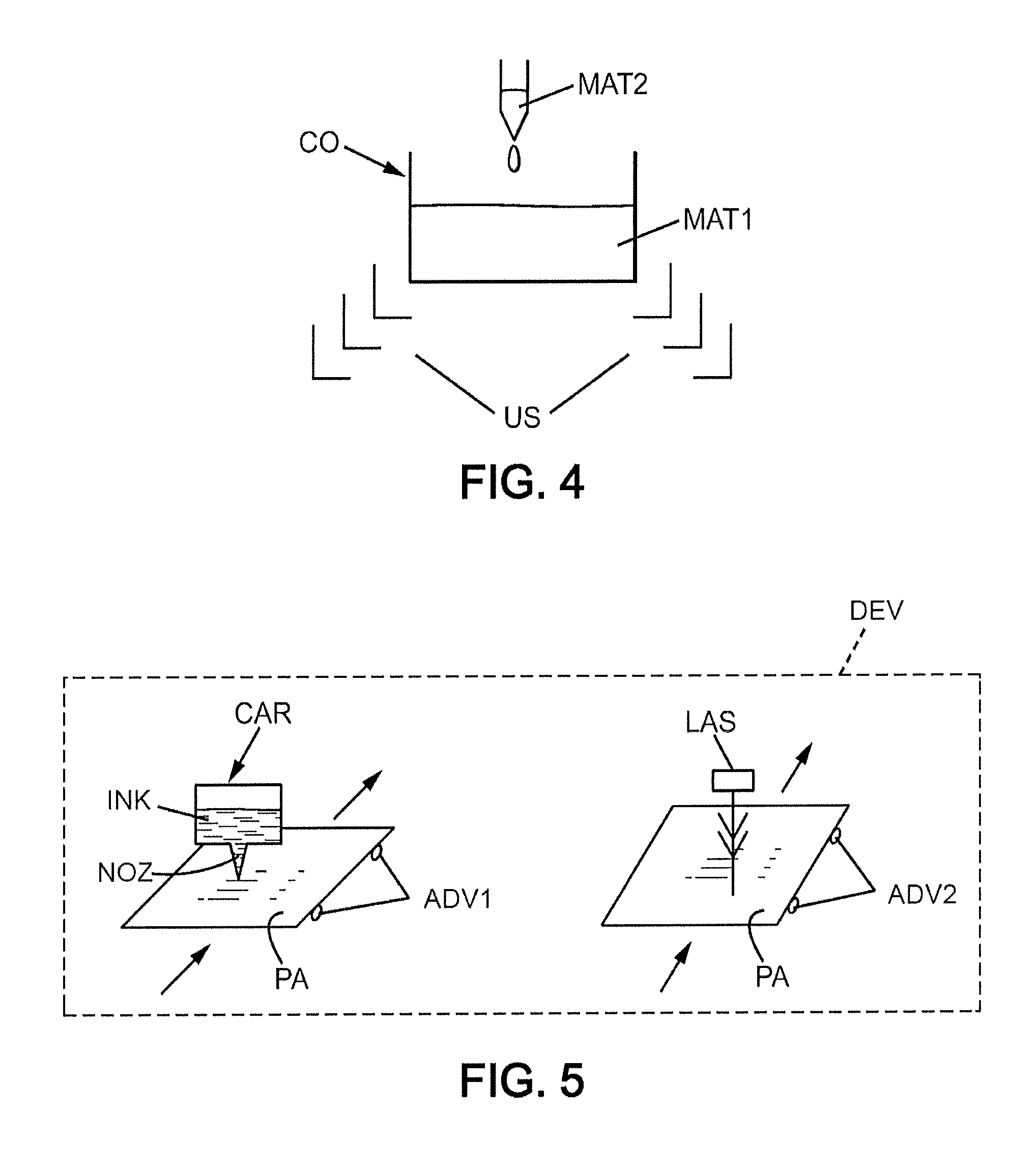Treatment for printing a surface with a reversible ink
a technology of ink and printing surface, applied in the field of printing surface treatment, can solve the problems of inability to reverse the method and the cost of the reagent proposed in this document, and achieve the effect of facilitating the spin transition
- Summary
- Abstract
- Description
- Claims
- Application Information
AI Technical Summary
Benefits of technology
Problems solved by technology
Method used
Image
Examples
Embodiment Construction
[0049]The invention proposes the use of a spin transition material as thermochromic pigment within an ink. As an example, the spin transition phenomenon can be encountered in a coordination complex comprising a transition metal of the electron configuration 3d4, 3d6 or 3d7 and nitrogen-containing ligands. Macroscopically, the compounds are in the form of crystals or polymers. The spin state transition manifests as a significant modification of the mechanical, dielectric, magnetic, and optical properties. An advantage of these compounds when implementing the invention is thermal hysteresis. In other words, within a given temperature range and as a function of its thermal, mechanical, optical “history”, the system can be obtained in two different spin states, the low spin state LS and the high spin state HS, as represented in FIG. 1. Note the shape of a hysteresis cycle as a function of temperature in graph Y. This particular characteristic will be described in more detail with refere...
PUM
| Property | Measurement | Unit |
|---|---|---|
| temperature | aaaaa | aaaaa |
| temperature | aaaaa | aaaaa |
| temperature | aaaaa | aaaaa |
Abstract
Description
Claims
Application Information
 Login to View More
Login to View More - R&D
- Intellectual Property
- Life Sciences
- Materials
- Tech Scout
- Unparalleled Data Quality
- Higher Quality Content
- 60% Fewer Hallucinations
Browse by: Latest US Patents, China's latest patents, Technical Efficacy Thesaurus, Application Domain, Technology Topic, Popular Technical Reports.
© 2025 PatSnap. All rights reserved.Legal|Privacy policy|Modern Slavery Act Transparency Statement|Sitemap|About US| Contact US: help@patsnap.com



